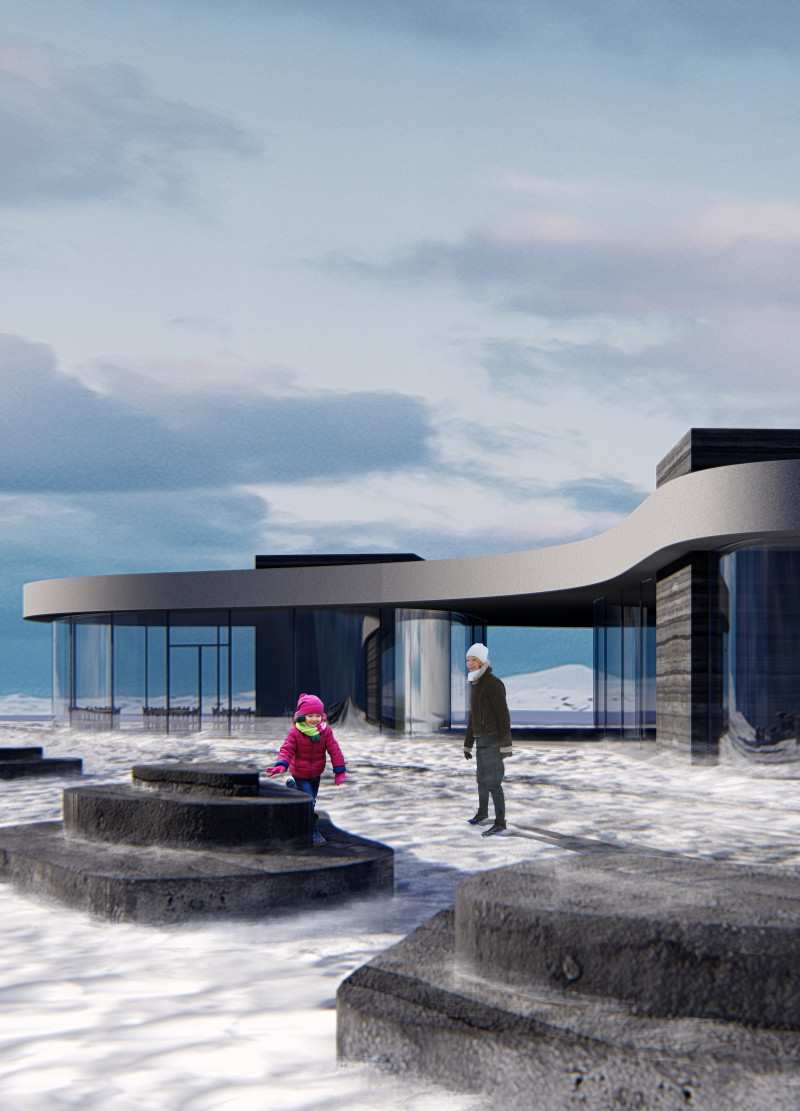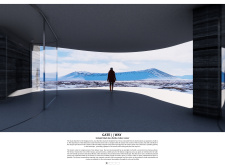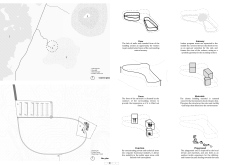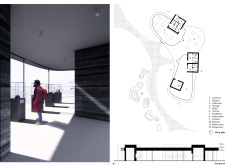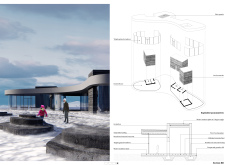5 key facts about this project
The Iceland Black Lava Fields Visitor Center is located in a dramatic volcanic landscape, surrounded by unique geological features. It serves as both an entry point and a space for education, inviting visitors to engage with the rich natural environment. The design fosters a connection between architecture and the stunning scenery, presenting an opportunity for visitors to explore and appreciate the lava fields.
Conceptual Framework
The visitor center is intended as a gateway to the area’s geological formations, creating a strong connection between the built structure and nature. This design concept encourages visitors to feel part of the landscape, enhancing their experience as they learn more about the surrounding volcanic features.
Architectural Layout
Two distinct indoor areas are covered by an organic roof that enhances movement between spaces. This roof offers sweeping views of the nearby volcano, while a covered terrace functions as both a lobby and an extension for outdoor dining. Visitors can easily transition between indoor and outdoor areas, emphasizing the relationship between the center and the environment.
Functional Organization
The building strategically uses a modular layout, organizing services into three supporting blocks. This setup keeps sight lines clear, allowing for expansive views of the landscape from inside. The layout facilitates easy movement in public areas while maintaining privacy for technical and service spaces, ensuring a pleasant experience for all visitors.
Material Integration
Materials play an important role in connecting the structure to its landscape. The primary material used is rammed concrete, which incorporates local lava dust. This choice reflects the local geology and helps create a sense of authenticity, while also supporting sustainable design practices. The texture and color of the materials blend with the natural surroundings.
The visitor center also includes an outdoor playground inspired by the nearby terrain, providing a playful space for children. This feature connects the built structure to the outdoor landscape and encourages families to explore the extensive trails available, further immersing them in the unique environment of the lava fields.


